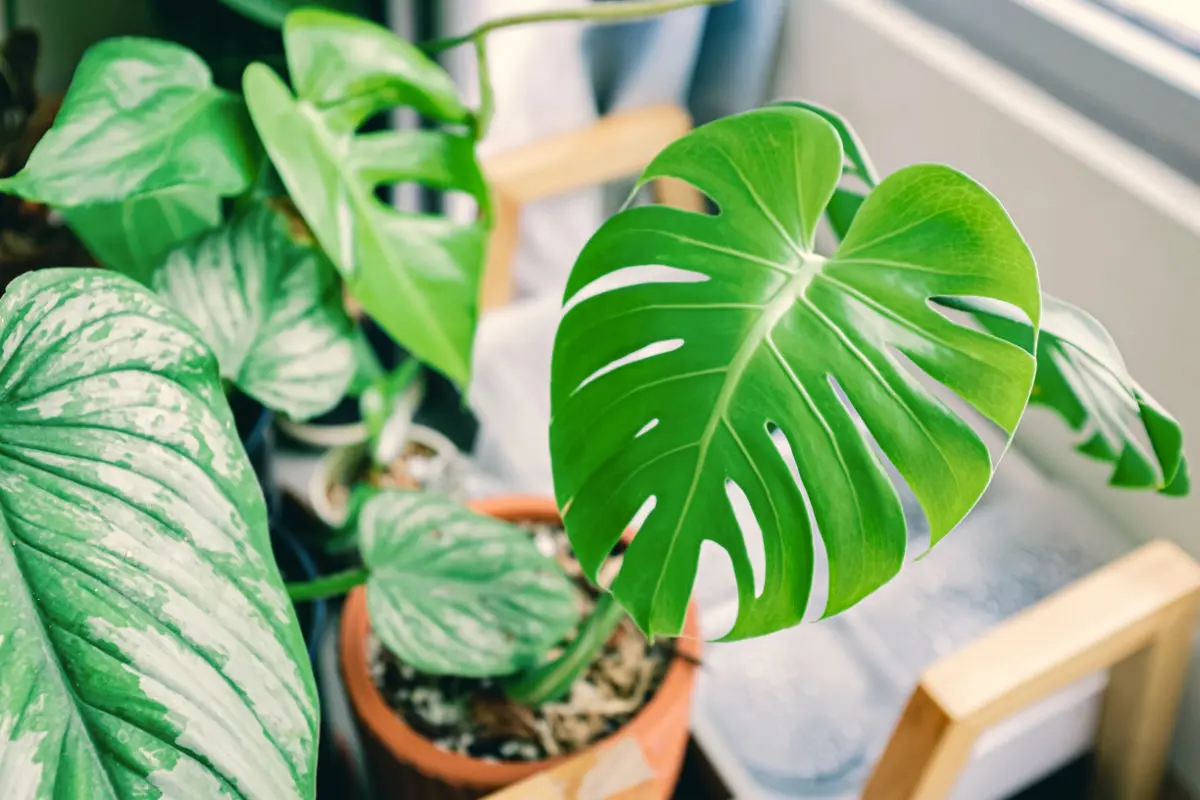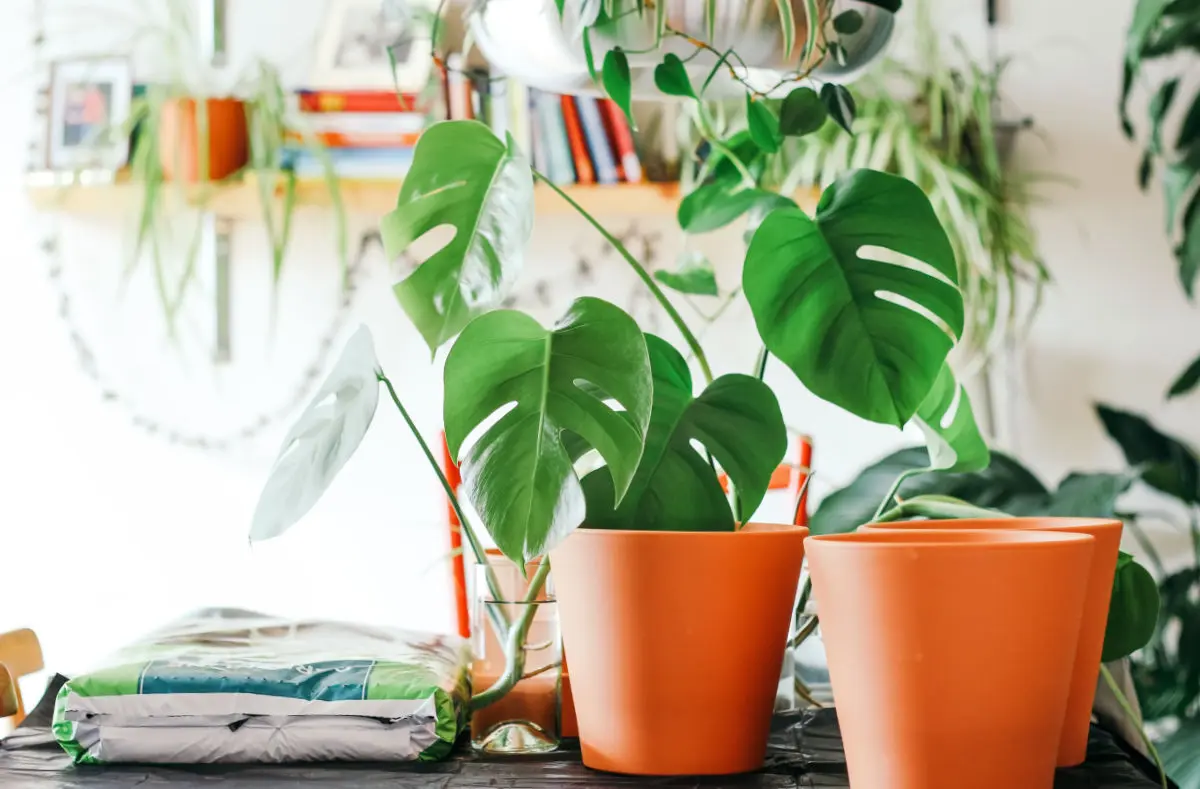Understanding the Monstera Growth Stages
Understanding the growth stages of your monstera plant is essential for proper care and maintenance. Learn about the different growth stages and how to support your monstera's growth and development.
By Tobias Holm
Are you a plant lover who is fascinated by the beauty and versatility of Monstera plants? If so, you're not alone. Monstera plants have become incredibly popular in recent years, and it's easy to see why. With their large, glossy leaves and unique perforations, Monstera plants bring a touch of elegance and tropical vibes to any space.
But did you know that Monstera plants go through different growth stages as they mature? Understanding these stages is crucial for proper care and maintenance. In this article, we will unveil the secret behind the different growth stages of Monstera plants, giving you the knowledge and insights you need to nurture your plant to its full potential.
From the tiny, delicate seedling to the mature and sprawling Monstera, each growth stage has its unique characteristics and requirements. We will explore how to identify and cultivate the different stages, including tips on watering, lighting, and pruning. Whether you're a beginner or an experienced plant enthusiast, this guide will help you unlock the secrets to the stunning growth of Monstera plants.
So let's dive in and uncover the mysteries of Monstera plant growth together.
The Different Growth Stages of Monstera Plants
Monstera plants, like many other plants, go through distinct growth stages during their lifecycle. Each stage brings its own set of characteristics and requirements. By understanding these stages, you'll be better equipped to provide the optimal care for your Monstera plant. Let's explore each growth stage in detail.
Stage 1: Seedling
The journey of a Monstera plant begins with a tiny seedling. Seedlings are delicate and vulnerable, requiring special attention and care. During this stage, it is crucial to provide the right conditions to ensure the seedling's successful development.
To nurture a Monstera seedling, provide it with a warm and humid environment. Keep the soil consistently moist but not waterlogged. A well-draining potting mix enriched with organic matter is ideal for healthy growth. Additionally, providing indirect light or filtered sunlight is essential for the seedling's photosynthesis process.
Stage 2: Juvenile
As the Monstera plant progresses from the seedling stage, it enters the juvenile stage. During this stage, the plant undergoes rapid growth, producing larger leaves with distinct perforations. The juvenile stage is characterized by the iconic heart-shaped leaves that Monstera plants are known for.
To support the growth of a juvenile Monstera plant, provide it with bright, indirect light. A well-lit spot near a window with filtered sunlight is ideal. Water the plant when the top inch of the soil feels dry, ensuring not to overwater. As the plant grows, it may require regular repotting into larger containers to accommodate its expanding root system.
Stage 3: Adult
Once a Monstera plant reaches the adult stage, its growth slows down, and its leaves become larger and more fenestrated. This stage is often when the plant begins to exhibit its climbing and vining tendencies, producing aerial roots that seek support.
To care for an adult Monstera plant, provide it with bright, indirect light. While it can tolerate lower light conditions, the plant will thrive in a well-lit spot. Water the plant when the top few inches of soil feel dry, ensuring thorough watering until water drains out from the bottom of the pot. It's important to provide a support structure, such as a moss pole or trellis, for the plant to climb and grow vertically.
Stage 4: Mature
As a Monstera plant continues to mature, it enters the final stage of its growth. At this stage, the plant's leaves become even larger, and the fenestrations become more pronounced. The mature Monstera plant is a stunning sight, with its sprawling vines and lush foliage.
Caring for a mature Monstera plant involves providing it with bright, indirect light. The plant can tolerate some direct sunlight, but excessive exposure can scorch the leaves. Water the plant deeply and allow the top few inches of soil to dry out between waterings. Regularly dust the leaves to keep them clean and free from dust accumulation, which can hinder the plant's ability to absorb light.
Factors That Influence Growth Stages
Several factors can influence the growth stages of Monstera plants. These factors include light, temperature, humidity, water, and nutrients. Understanding how these factors affect plant growth can help you create an optimal environment for your Monstera plant.
Light
Light plays a crucial role in the growth and development of Monstera plants. Bright, indirect light is generally preferred, although the plant can tolerate lower light conditions. However, insufficient light can result in stunted growth and reduced fenestration. On the other hand, excessive exposure to direct sunlight can lead to leaf burn. Finding the right balance is key to promoting healthy growth.
Temperature
Monstera plants thrive in warm temperatures, ideally between 65°F and 85°F (18°C and 29°C). Avoid exposing the plant to temperatures below 60°F (15°C), as it can stunt growth and cause damage. Additionally, sudden temperature fluctuations can stress the plant, affecting its overall health and growth.
Humidity
Monstera plants are native to tropical regions and thrive in high humidity environments. While they can adapt to lower humidity levels, providing adequate humidity can promote optimal growth and prevent issues like dry leaf edges and brown tips. You can increase humidity by misting the plant regularly, placing it on a tray filled with water and pebbles, or using a humidifier.
Water
Proper watering is essential for the healthy growth of Monstera plants. Overwatering can lead to root rot, while underwatering can cause dehydration and hinder growth. Water the plant when the top few inches of soil feel dry, ensuring thorough watering until water drains out from the bottom of the pot. Avoid leaving the plant sitting in standing water, as this can lead to root problems.
Nutrients
Providing the right nutrients is crucial for promoting healthy growth in Monstera plants. Use a well-balanced, organic fertilizer formulated specifically for houseplants. During the growing season, fertilize the plant every 2-4 weeks, following the instructions on the fertilizer packaging. Avoid overfertilization, as it can lead to nutrient burn and other issues.
Tips for Caring for Monstera Plants in Each Growth Stage
Caring for Monstera plants in each growth stage requires specific attention and consideration. Here are some tips to help you provide the best care for your plant at each stage:
Seedling Stage
- Keep the soil consistently moist but not waterlogged.
- Provide a warm and humid environment.
- Place the seedling in an area with indirect light or filtered sunlight.
Juvenile Stage
- Provide bright, indirect light.
- Water the plant when the top inch of soil feels dry.
- Repot the plant into larger containers as it grows.
Adult Stage
- Provide bright, indirect light, with the option for lower light conditions.
- Water the plant when the top few inches of soil feel dry.
- Offer a support structure for the plant to climb and grow vertically.
Mature Stage
- Provide bright, indirect light, with some tolerance for direct sunlight.
- Water the plant deeply, allowing the top few inches of soil to dry out between waterings.
- Regularly dust the leaves to keep them clean and free from dust accumulation.
Common Problems and Troubleshooting
Despite your best efforts, Monstera plants can sometimes face issues that hinder their growth. Here are some common problems you may encounter and how to troubleshoot them:
- Yellowing leaves: Yellowing leaves can indicate overwatering or inadequate light. Adjust your watering routine and ensure the plant is receiving enough light.
- Brown tips: Brown tips can be a sign of low humidity or underwatering. Increase humidity levels or adjust your watering schedule accordingly.
- Leaf drooping: Leaf drooping can be caused by underwatering or overwatering. Check the soil moisture and adjust watering as needed.
- Pest infestation: Common pests that can affect Monstera plants include spider mites, mealybugs, and scale insects. Treat the infestation with appropriate insecticides or natural remedies.
Conclusion and Final Thoughts
Understanding the different growth stages of Monstera plants is essential for providing the best care and ensuring their healthy development. From the delicate seedling to the sprawling mature plant, each growth stage has its unique characteristics and requirements.
By following the tips and guidelines outlined in this article, you'll be well-equipped to nurture your Monstera plant to its full potential.
So go ahead, dive into the world of Monstera plant growth, and unlock the secrets of this stunning tropical beauty.



